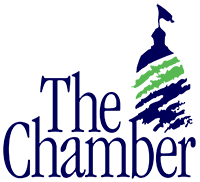Events Upcoming
New Members
Imagine being a young woman who is excited to work in HR. She joins a Japanese car manufacturer that over eight years grows more than 250 percent. She is good at problem solving, is often invited to be a speaker and becomes the youngest woman to be promoted into the company's management. Eight years into her career, her boss says the chairman does not think she is the best HR leader to take the company into the future.
"How would you feel?" asked Jennifer McClure, president of Unbridled Talent LLC in Cincinnati. "The person was me, and it did not feel good."
But, it was "hurtful but right," she told attendees in her mega session "Disrupt HR: It's Time to Disrupt HR and Approach It in a Whole New Way," held June 24 at the Society for Human Resource Management 2019 Annual Conference & Exposition. She'd gotten comfortable and hadn't improved anything in the past several years. She decided to leave the company as a result and went to a car manufacturer that was "broken" to help turn it around.
In the process, she came to the conclusions that being comfortable is the enemy of being awesome and that disruption can be a powerful change agent.
"HR is overdue for disruption," she said.
Steps to Disrupt
The first step in disruption is to identify problems that need to be disrupted.
Send employees on a problem scavenger hunt, McClure recommended. Let them know ahead of time that the company does not have the resources to solve all the problems identified and will have to prioritize solutions. But crowdsourcing can help the company figure out which problems are most in need of being addressed.
Involve people from outside the company, such as other HR professionals or people from the community, McClure urged.
Host an "HR hackathon," she suggested. LinkedIn held an HR hackathon inviting interns—customers of HR rather than HR themselves—to suggest how to make HR better. The end result was a mobile app that provided feedback to interns from managers.
Conference attendee Debra Crissey-Smith, an HR manager with Oerlikon in Charlotte, N.C., and member of SHRM for 27 years, noted that she helped disrupt her workforce by introducing flexible schedules.
Cisco hosted a companywide HR hackathon one day and got more than 100 ideas with multiple winners, including a mobile recruiting app called "You Belong@Cisco."
At the Japanese car manufacturer McClure worked for, a cross-departmental team of colleagues volunteered to work together to solve a problem with a malfunctioning cog. The solution that they came up with saved the company about $2 million a year. Such team exercises can be great opportunities for high-potential employees to build their leadership skills, she noted.
McClure encouraged conference attendees to also set aside time for themselves to imagine what an ideal day would look like. HR professionals shouldn't focus on what they'd like to avoid doing, she cautioned, but what they would like to accomplish during an ideal day.
She imagined waking without an alarm clock, working with whomever she wanted, traveling and teaching, and she ultimately wound up with the job she now has.
To disrupt, HR also should think about what major undertaking it would like to accomplish in the future, perhaps something really creative like Alphabet's Internet balloon project, Project Loon, which aims to help provide Internet access in far-flung places where it isn't presently available.
After taking all these steps, HR will need to build a business case, using data, to persuade management to disrupt operations.
Disruption can be incremental and in spurts, McClure observed. There will be failures along the way, and HR should prepare management for that. WD-40 is so named because it was the 40th version of the oil. Bubble wrap started out as wallpaper. James Dyson built 5,271 prototypes before he had a vacuum cleaner he liked.
When it comes to disruption, McClure said, "The reality is most of us just need to start."
This article provided by The Society for Human Resource Management (SHRM).
